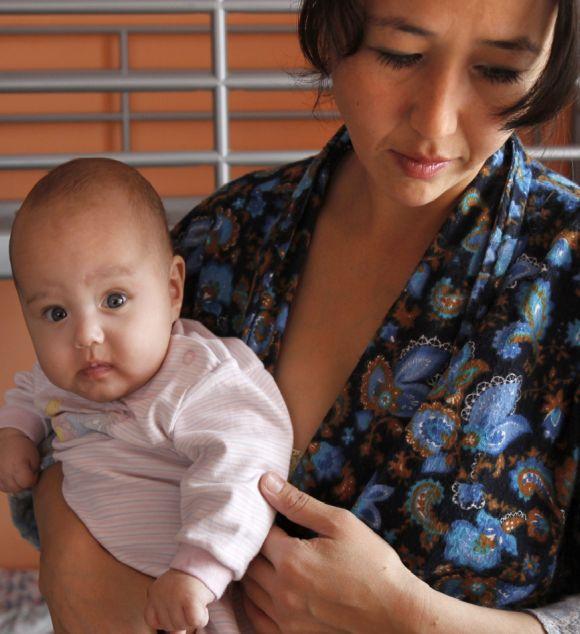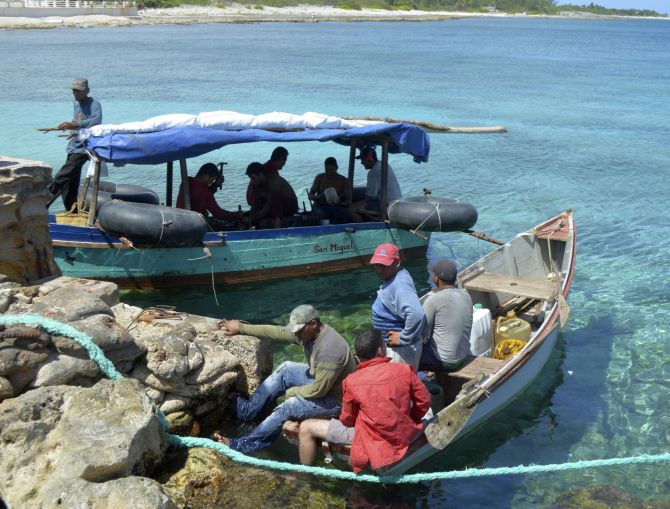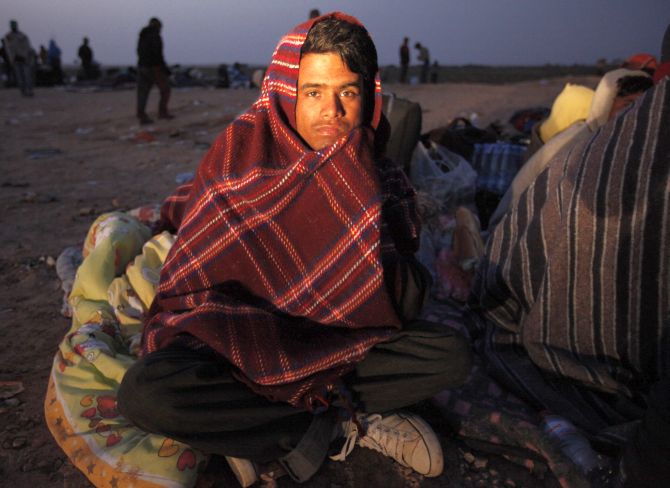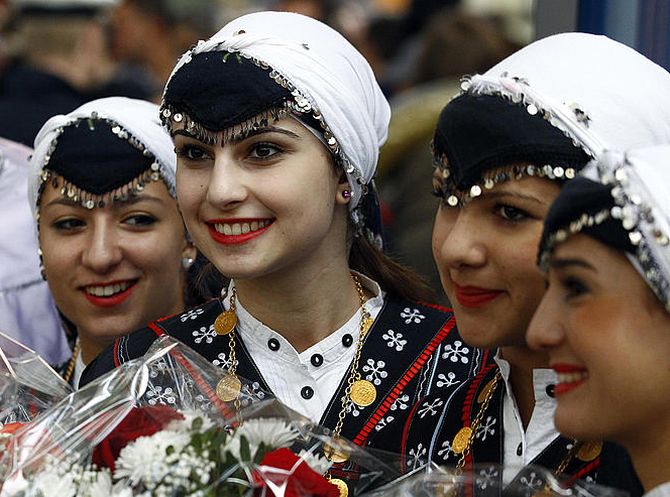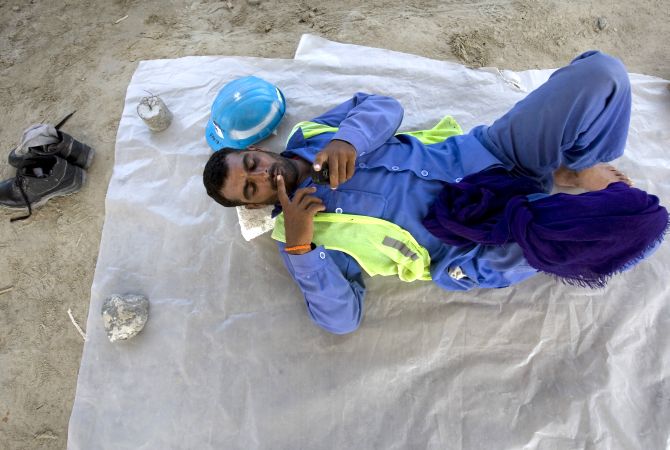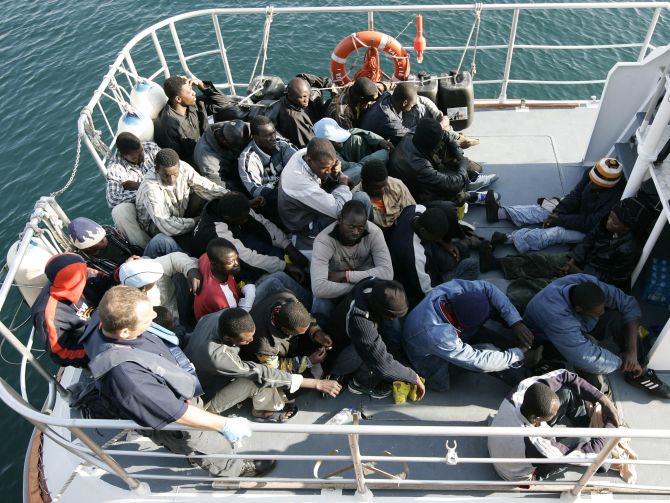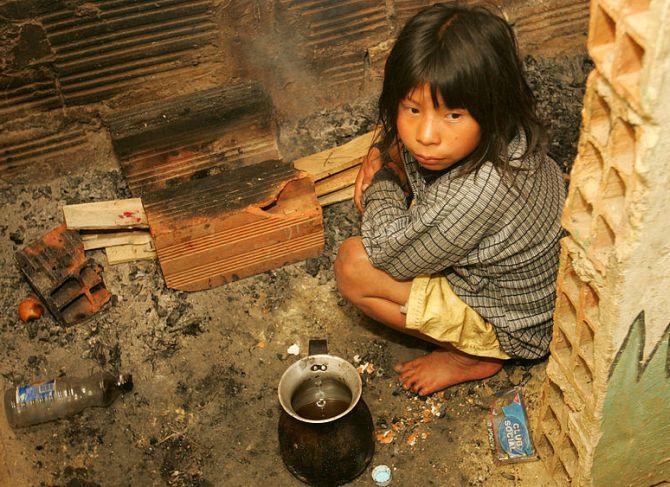 | « Back to article | Print this article |
13 countries that see the biggest migration in the world
The global migrant population, if it was a nation, would be the fifth largest in the world, 215 million people strong. Here are the major 'migration corridors'.
Please click NEXT to see the migration hotspots worldwide…
Powered by ![]() To read more such stories Click Here!
To read more such stories Click Here!
13 countries that see the biggest migration in the world
Mexico --> United States
The Mexico-United States 'migration corridor' has for decades been by far the largest in the world, according to World Bank data, with about 11.6 million Mexicans living in America.
However, in 2012 the Pew Hispanic Center reported that net migration to the United States had fallen to zero. Between 2005 and 2010 about the same number of Mexicans (1.4 million) returned home from the United States as headed north, reflecting changing socio-economic circumstances in both countries.
Mexico still has the world's highest number of emigrants, with 11.9 million Mexicans living abroad.
The United States, on the other hand, has the most immigrants of any country: 42.8 million out of a total population of 310 million.
Please click NEXT to read further…
Powered by ![]() To read more such stories Click Here!
To read more such stories Click Here!
13 countries that see the biggest migration in the world
Cuba --> United States
Thousands attempt the 90-mile (145km) crossing every year, encouraged by the ‘wet-foot, dry foot’ policy that allows those who reach dry land in the US to remain.
If they are intercepted at sea, the Cubans get deported. These hopefuls didn’t make it and were repatriated.
Cubans have been leaving for the United States in various waves since the communist revolution led by Fidel Castro in 1959.
The number of Cuban exiles was about one million, according to World Bank statistics.
Immigration has increased since 1995 after the United States agreed an annual quota of 20,000 visas for Cubans after a massive influx of 'boat people'. These days most Cubans arrive by land via Mexico.
Please click NEXT to read further…
Powered by ![]() To read more such stories Click Here!
To read more such stories Click Here!
13 countries that see the biggest migration in the world
Former Soviet States --> Russia
Russia has a decreasing population and the chaos of the 1990s has produced a hole in the demographic curve meaning there is a shortage of young adults and indigenous labour.
Migrant workers are filling this gap, mainly from former Soviet countries like Ukraine, Belarus or Central Asian states.
However, there are also many Russians in these countries, a legacy of the Soviet era.
The second largest migration corridor in the world is between Russia and Ukraine, with 3.7 million Ukrainians in Russia and 3.6 million Russians in Ukraine, according to the World Bank. The third largest is between Russia and Kazakhstan.
Please click NEXT to read further…
Powered by ![]() To read more such stories Click Here!
To read more such stories Click Here!
13 countries that see the biggest migration in the world
Bangladesh --> India
The Bangladesh-India migration corridor is the third largest in the world, according to World Bank data, with some 3.3 million Bangladeshis living in India, many attracted by economic opportunity and the cultural and linguistic ties with their giant neighbour.
At the same time, over one million Indians live in Bangladesh.
Please click NEXT to read further…
Powered by ![]() To read more such stories Click Here!
To read more such stories Click Here!
13 countries that see the biggest migration in the world
Turkey --> Germany
Partly as a result of the labour migration agreements in the 1960s there were about 2.7 million Turks living in Germany, according to the World Bank.
At EU level, Turkish citizens are the biggest group of non-nationals, according to EuroStat, comprising 7.5 per cent of all foreigners living in the EU.
Please click NEXT to read further…
Powered by ![]() To read more such stories Click Here!
To read more such stories Click Here!
13 countries that see the biggest migration in the world
Eastern Europe --> Western Europe
The largest group of immigrants into Europe is other Europeans. Further enlargement of the EU in 2007, coupled with relaxation of labor laws, prompted Romanians and Bulgarians to also move West, with Romanians now the second biggest group of foreigners living in EU countries after Turks, according to Eurostat.
Non-EU countries in the East like Albania and Ukraine also provide many willing workers for the continent.
Please click NEXT to read further…
Powered by ![]() To read more such stories Click Here!
To read more such stories Click Here!
13 countries that see the biggest migration in the world
Africa --> Europe
Every year tens of thousands of Africans brave the Mediterranean and the Eastern Atlantic to reach European territory.
The EU's Institute for Security Studies estimated that during the 1990s more than 180,000 succeeded.
Africans make up one quarter of non-EU nationals living within Europe, about 4.9 million people according to Eurostat.
The majority are from North Africa. Moroccans are the largest group of foreign citizens in the EU-27 after Turks and Romanians.
Recently, sub-Saharan Africans have increasingly joined North Africans in their efforts to reach Europe.
In response, the EU has set up "reception camps" in North Africa to repatriate illegal migrants.
Please click NEXT to read further…
Powered by ![]() To read more such stories Click Here!
To read more such stories Click Here!
13 countries that see the biggest migration in the world
South Asia --> Arabian Peninsula
The construction boom in the oil-rich Arabian peninsula has attracted millions of such migrants to countries like the UAE and Saudi Arabia.
As of 2010, there were 2.2 million Indians in the UAE and 1.5 million in Saudi Arabia (along with 1 million Pakistanis) according to the World Bank.
Human Rights Watch claims that migrant workers represent 95 per cent of the workforce in UAE and many are exposed to harsh working conditions.
Please click NEXT to read further…
Powered by ![]() To read more such stories Click Here!
To read more such stories Click Here!
13 countries that see the biggest migration in the world
Rural China -> Urban China
Every year about 10 million Chinese migrate from the countryside to cities looking for work.
According to Amnesty International, the number of migrant workers in China has risen from 2 million in the 1980s to some 150-200 million today, with a projected 300 million by 2015.
The International Labor Organization calls this ‘the world’s largest ever peacetime migration’ and by 2012 it had transformed the Chinese into a predominantly urban population for the first time.
Please click NEXT to read further…
Powered by ![]() To read more such stories Click Here!
To read more such stories Click Here!
13 countries that see the biggest migration in the world
Darfur --> Refugee Camps
According to the Internal Displacement Monitoring Center (IDMC), Sudan counted some 5.3 million IDPs in 2006 due to various conflicts - more than any other country in the world.
Today, that number is down to 2.2 million, still as high as 7 per cent of the population.
Please click NEXT to read further…
Powered by ![]() To read more such stories Click Here!
To read more such stories Click Here!
13 countries that see the biggest migration in the world
Iraq -> Middle East
Violence in Iraq has driven up to 4.7 million people from their homes since the U.S.-led invasion in 2003, according to the UN High Commissioner for Refugees, in an upheaval not matched in the Middle East since the exodus of Palestinians when Israel was created in 1948.
Iraq has between 2.3 and 2.6 million Internally Displaced Persons. Syria and Jordan are the main overseas destinations for Iraqi migrants, with over 1 million having fled to Syria alone.
Please click NEXT to read further…
Powered by ![]() To read more such stories Click Here!
To read more such stories Click Here!
13 countries that see the biggest migration in the world
Pakistan/Iran --> Afghanistan
Over 5.7 million Afghan refugees have returned since the overthrow of the Taliban government in 2001, swelling the population by 25 per cent according to the UN refugee agency (UNHCR).
UNHCR has assisted over 4.6 million Afghan refugees to return from Iran and Pakistan, but many have problems reintegrating into their new communities.
Meanwhile, an estimated 1.7 million Afghans remain in Iran alone.
Please click NEXT to read further…
Powered by ![]() To read more such stories Click Here!
To read more such stories Click Here!
13 countries that see the biggest migration in the world
Refugees in Colombia
Although conditions have improved in recent years, violence in the Colombian countryside between the army, guerrilla groups, and paramilitaries has displaced 3.6 million people since 1997 according to official figures.
Most of the refugees are in remote, rural areas and so are displaced inside the country, although hundreds of thousands have fled to Venezuela, Panama, and Costa Rica.
The United Nations says Colombian displacement is one of the world's worst ongoing humanitarian crises outside Africa.
Powered by ![]() To read more such stories Click Here!
To read more such stories Click Here!
